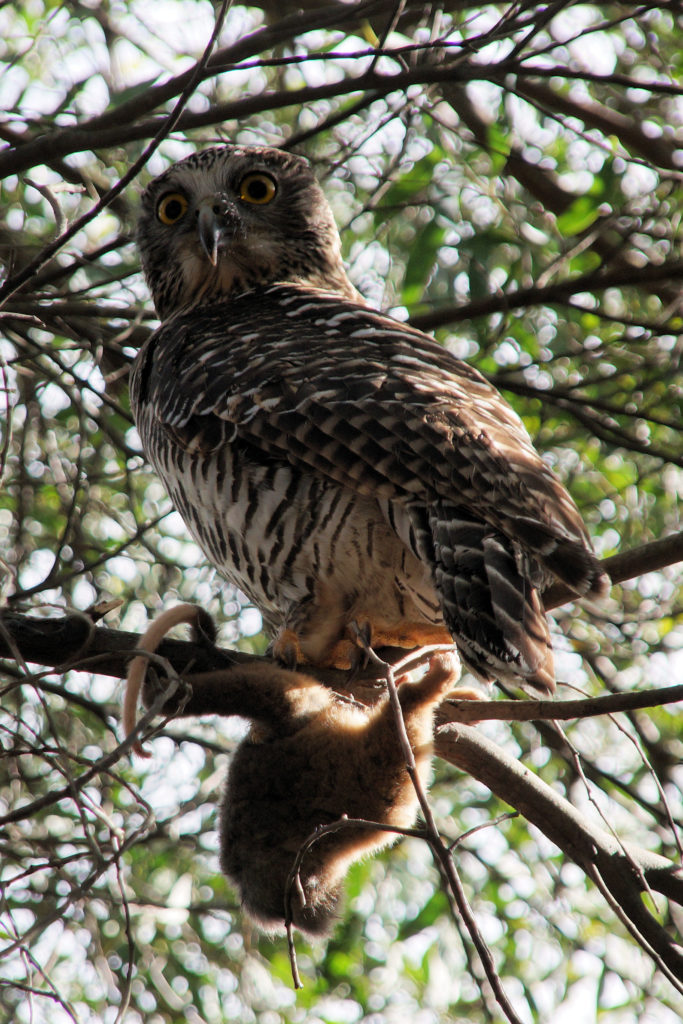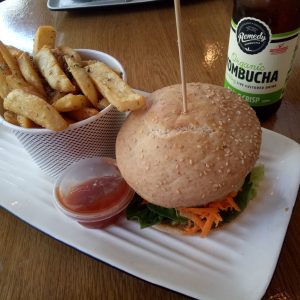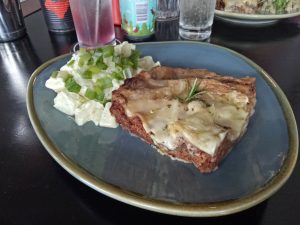Victoria, one of Australia’s south-eastern states, is rich in biodiversity. However, pressures from human populations are threatening the survival of much-loved native species including the Weedy Sea Dragon, Burrunan Dolphin, Powerful Owl and Strzelecki Koala. Let’s explore how these endemic species are threatened by humans.
Human behaviours such as land-clearing, demolition of cultural structures, animal control measures and water activities all endanger unique native species. Australia observed National Threatened Species Day last month but some native species are still crying out for our help. Sadly, there is a looming dread for some of Victoria’s much-loved native species.
The Weedy Sea Dragon of The Mornington Peninsula

Weedy Sea Dragons are native to The Mornington Peninsula on the coast of south-eastern Victoria. This is an idyllic location for day-trippers and weekenders from the capital city of Melbourne. Here, the beachside village of Flinders is home to Flinders Pier. Since it was built in 1866, the 250-metre long pier is a popular destination for panoramic views of Bass Strait and the Peninsula’s surrounding bushlands. Beneath the waves, many of the pylons that support Flinders Pier are home to a local population of Weedy Sea Dragons.
These glorious marine creatures are striking in colour (think – reds, yellow and purple) and are native to the waters off south and east Australia. Now, these beautiful beings are listed as near threatened by the International Union for the Conservation of Nature. In recent years, the pier has caught the attention of Parks Victoria; the state’s government agency that protects its natural and cultural heritage. The first 180 metres of the pier is deemed hazardous for humans. As a result, Parks Victoria planned to re-develop the area and demolish this part of the pier in 2022. A concrete pier was built alongside the original pier to provide safe passage for foot traffic.
Since the announcement, locals have been up in arms and launched the Save Flinders Pier campaign. According to locals, demolishing much of the original pier means demolishing habitat for Weedy Sea Dragons. The campaign also attracted the attention of Sir David Attenborough who weighed in on the fight to preserve the pier. As a result of the campaign and brewing public interest, the pier received a nomination for a place on the Victorian Heritage Register lists. Currently, an assessment is taking place and, if successful, will provide legal protection for the pier. A heritage impact assessment commissioned by Parks Victoria is also currently underway.
The Burrunan Dolphin of Port Phillip Bay and the Gippsland Lakes

Another marine species that calls the Victorian coast home is the Burrunan Dolphin. This is a rare species of Bottlenose dolphins that only inhabits Port Phillip Bay and the Gippsland Lakes. Both locations are a three hour’s drive from one another yet the dolphins in each location are genetically distinct. Only about 120 Burrunan Dolphins are found in the Bay and about 65 are found in the Lakes. As you would expect, Burrunan Dolphins move and play in the waters of Port Phillip Bay. They can be spotted by humans on a regular basis because of the species’ distinct curved dorsal fin and blunt nose.
What makes Burrunan Dolphins even more Victorian is their name. Burrunan means ‘large sea fish of the porpoise kind’ in the local Indigenous Australian languages of Boonwurrung, Woiwurrung and Taungurung. So how are humans affecting these delicate populations? Behavioural factors threaten Burrunan Dolphins because Victorians love being out on the water. Burrunan Dolphins may be found entangled in fishing nets and there’s the risk of boats and propellers colliding with Burrunan Dolphins. Plus, marine pollution can cause disease among the Burrunan Dolphins while sonar interference can cause disorientation and beaching. What makes these dolphins increasingly difficult to preserve comes down to their genetic make-up. Research work conducted by Dr Charlton-Robb led to the discovery of the Burrunan Dolphin in Victoria as a distinct species only ten years ago. So, the lack of genetic diversity, small population numbers and habitation within close proximity to urban areas make the Burrunan Dolphin particularly vulnerable. Conservation is then a hefty challenge if human populations in Victoria aren’t willing to re-think their water-based behaviours.
While it may be easy for city-dwellers near Port Phillip Bay to adjust, recreational behaviours in regional areas like the Gippsland Lakes may be trickier. Though, humans should be willing to preserve the area (which is known as Australia’s largest and most beautiful inland waterway) and its unique wildlife. Victorians are currently recommended to keep their boats 100 metres away from the dolphins and a 300-metre distance applies to jet-skiers. Surely, more can be done?
The Powerful Owl found throughout Victoria

On dry land, a Victorian bird species is also in a fight for its life. Only 11 species of owls are found across Australia, and the Powerful Owl only inhabits South-East Queensland, New South Wales and Victoria. The Powerful Owl is Australia’s largest owl species which is intensely territorial; they can weigh over 1.5 kg, stand 65 cm tall and have a wingspan of over 1.3 metres. They love to feast on native possums and tend to roost during the day. When they breed and nest during Victoria’s winter months, Powerful Owls like to choose trees with very large hollows; preferably eucalypt trees that can be as old as 200 years.
What makes the Powerful Owl particularly recognisable is their “whoo hoo”, the only owl species in Australia to sing the stereotypical owl sound. Their tree of choice, the Eucalypt, is found commonly throughout Victoria which makes for optimal breeding ground for one or two chicks. They prefer large chains of forest or woodland areas, but can opt for fragmented areas. However, increasing urban development and land-clearing for animal agriculture threaten habitats for Powerful Owls so the species is now endangered. According to the Department of Sustainability and Environment, 65% of Victoria’s forest cover has been cleared since European settlement and only 5% of freehold land remains forested. In order to survive, Powerful Owls need a tree to nest and roost in, and they need food. Possums also like to inhabit eucalypts and they have adapted to humans by nesting in the rooves of people’s houses. Therefore, some people in Victoria have a love-hate relationship with possums so there is the risk of humans taking their own course of action to deter possums from rooves. For example, it’s illegal to bait and destroy Australian native wildlife including possums yet it’s common to see warnings on local council websites to deter people from the practice. Land-clearing also affects possums and this means the habitat for the owl’s preferred food choice is also at stake. Further north in the state of New South Wales where a mice ‘plague’ is occurring, there have been reports of Powerful Owls dying of internal bleeding as a result of eating mice that have ingested rodenticides.
The Strzelecki Koala of South Gippsland

The Strzelecki or South Gippsland Koala is another loved land animal that’s feeling the effects of human interference. In the late 19th Century, koala numbers in Victoria dwindled due to habitat loss and koala hunting. So, government agencies decided to move koala populations from Phillip and French Islands (off the coast of Victoria) to the rest of the state. These koalas had very low genetic diversity which meant they compromised this diversity and their numbers multiplied when they bred with other koalas on mainland Victoria. Somehow, koala populations in the Strzelecki Ranges kept themselves genetically intact. Therefore, Strzelecki koalas are believed to be the most unique and important population of wild koalas native to Victoria.
Fast-forward to 2021, these iconic marsupials are under threat yet again. Friends of the Earth Melbourne have documented that about 1,500 to 2,000 Strzelecki koalas remain and a large portion of their habitat falls under classified private land. Much of this land is primarily occupied by timber plantations. Like all koalas, Strzelecki koalas cannot survive without their native habitat and a specific species of native eucalypt tree for nutrition. Their habitat also came under threat in June this year when severe storms ripped through most of Victoria which downed many trees. In recent years, bushfires have also severely impacted native habitats. Friends of the Earth Melbourne are currently aiming to list the koala under the Environment Protection Biodiversity and Conservation (EPBC) Act. Unfortunately, Victoria’s currently standing Flora and Fauna Act Guarantee (1988) does not recognise the significance and importance to protect sub-species like the Strzelecki Koala.




